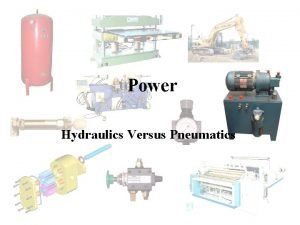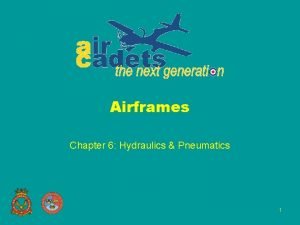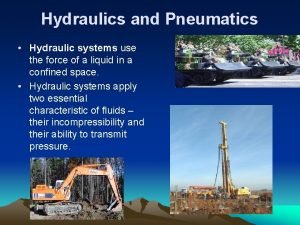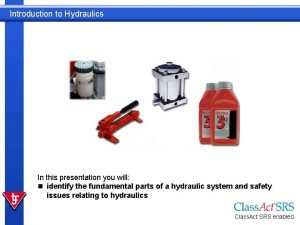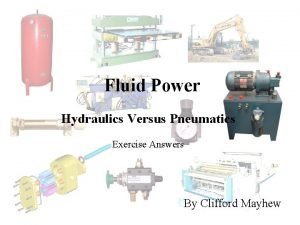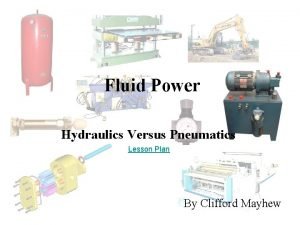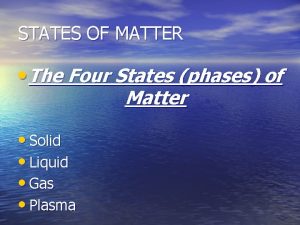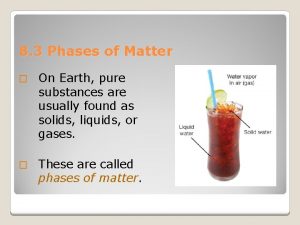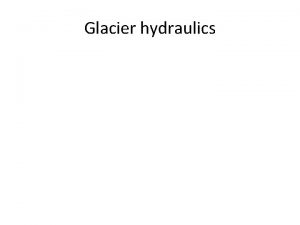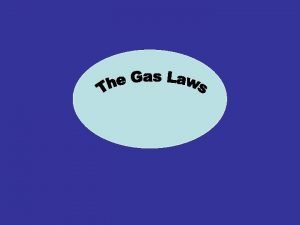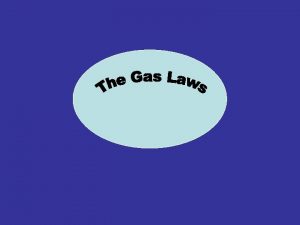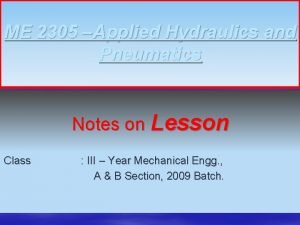Hydraulics pneumatics Phases of Matter Density and Specific

















- Slides: 17

Hydraulics & pneumatics

• • Phases of Matter Density and Specific Gravity Pressure in Fluids Atmospheric Pressure and Gauge Pressure Pascal’s Principle Measurement of Pressure; Gauges and the Barometer Fluids in Motion; Flow Rate and the Equation of Continuity

• Bernoulli’s Equation • Applications of Bernoulli’s Principle: Airplanes, Blood Flow • Viscosity • Flow in Tubes: Blood Flow • Surface Tension and Capillarity • Pumps, and the Heart .

Phases of Matter The three common phases of matter are solid, liquid, and gas. A solid has a definite shape and size. A liquid has a fixed volume but can be any shape. A gas can be any shape and also can be easily compressed. Liquids and gases both flow, and are called fluids.

Density and Specific Gravity The density ρ of an object is its mass per unit volume: The SI unit for density is kg/m 3. Water at 4°C has a density of 1 g/cm 3 = 1000 kg/m 3. The specific gravity of a substance is the ratio of its density to that of water.

Pressure in Fluids Pressure is defined as the force per unit area. Pressure is a scalar; the units of pressure in the SI system are pascals: 1 Pa = 1 N/m 2 .

Pressure in Fluids there is no component of force parallel to any solid surface once again, if there were the fluid would flow. The pressure at a depth h below the surface of the liquid is due to the weight of the liquid above it.

Atmospheric Pressure and Gauge Pressure At sea level the atmospheric pressure is about 1. 013 × 105 N/m 2; this is called one atmosphere (atm). Another unit of pressure is the bar: 1 bar = 1. 00 × 105 N/m 2 Standard atmospheric pressure is just over 1 bar. This pressure does not crush us, as our cells maintain an internal pressure that balances it.

Atmospheric Pressure and Gauge Pressure Most pressure gauges measure the pressure above the atmospheric pressure—this is called the gauge pressure. The absolute pressure is the sum of the atmospheric pressure and the gauge pressure. P = PA + PG

Measurement of Pressure; Gauges and the Barometer There a number of different types of pressure gauges. This one is an opentube manometer. The pressure in the open end is atmospheric pressure; the pressure being measured will cause the fluid to rise until the pressures on both sides at the same height are equal.

10 -6 Measurement of Pressure; Gauges and the Barometer This is a mercury barometer, developed by Torricelli to measure atmospheric pressure. The height of the column of mercury is such that the pressure in the tube at the surface level is 1 atm. Therefore, pressure is often quoted in millimeters (or inches) of mercury.

Fluids in Motion; Flow Rate and the Equation of Continuity If the flow of a fluid is smooth, it is called streamline or laminar flow Above a certain speed, the flow becomes turbulent Turbulent flow has eddies; the viscosity of the fluid is much greater when eddies are present.

Equation of Continuity We will deal with laminar flow. The mass flow rate is the mass that passes a given point per unit time. The flow rates at any two points must be equal, as long as no fluid is being added or taken away. This gives us the equation of continuity:

Fluids in Motion; Flow Rate and the Equation of Continuity If the density doesn’t change—typical for liquids—this simplifies to A 1 v 1 = A 2 v 2. Where the pipe is wider, the flow is slower.

Bernoulli’s Equation A fluid can also change its height. By looking at the work done as it moves, we find: This is Bernoulli’s equation. One thing it tells us is that as the speed goes up, the pressure goes down.

Venturi Meter A venturi meter can be used to measure fluid flow by measuring pressure differences.

Viscosity Real fluids have some internal friction, called viscosity. The viscosity can be measured. where η is the coefficient of viscosity.
 Hydraulics vs pneumatics
Hydraulics vs pneumatics Hydraulic system advantages
Hydraulic system advantages Introduction to hydraulics and pneumatics
Introduction to hydraulics and pneumatics Hydraulic presentation
Hydraulic presentation Pump exercise
Pump exercise Fluid power hydraulics and pneumatics
Fluid power hydraulics and pneumatics Hydraulics & pneumatics
Hydraulics & pneumatics How to find specific gravity
How to find specific gravity Density of bcc
Density of bcc Linear density of fcc 110
Linear density of fcc 110 How to calculate specific gravity
How to calculate specific gravity Four phases of matter
Four phases of matter 4 phases of matter
4 phases of matter 5 phases of matter
5 phases of matter 3 phases of matter
3 phases of matter Why isn't it a good idea to classify matter by its phases
Why isn't it a good idea to classify matter by its phases Whats the study of matter and energy
Whats the study of matter and energy Phases of matter
Phases of matter
